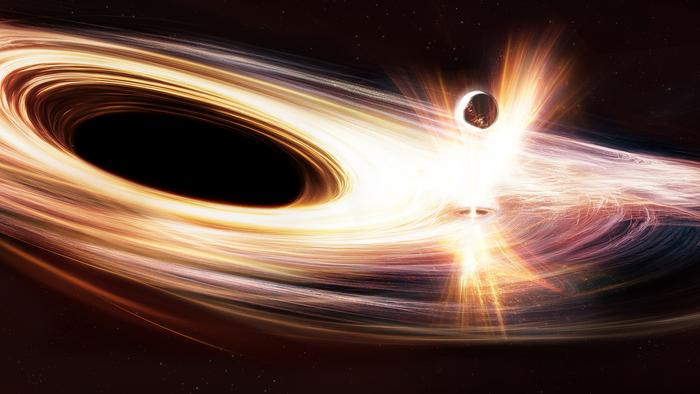Now Reading: Black Hole in Distant Galaxy Emits Rare X-Ray Bursts
-
01
Black Hole in Distant Galaxy Emits Rare X-Ray Bursts
Black Hole in Distant Galaxy Emits Rare X-Ray Bursts

Fast Summary
- Black Hole Activity: astronomers observed a rare black hole, nicknamed “Ansky,” at the center of the galaxy SDSS1335+0728, located about 300 million light-years away.This black hole has started producing quasiperiodic X-ray eruptions (QPEs) sence 2024.
- X-Ray Bursts: These bursts occur regularly and are brighter and longer than typical QPEs. Ansky’s activity challenges conventional models of how such eruptions arise,as there is no evidence of nearby celestial objects being destroyed.
- Scientific Observations: Space telescopes like ESA’s XMM-Newton and NASA’s NICER, Swift, and Chandra are monitoring the phenomenon closely to understand its mechanics.
- Potential Revisions to Understanding: Researchers hypothesize that shocks in Ansky’s accretion disc may be caused by a smaller object traveling through it repeatedly – disrupting orbiting material without destroying stars or other matter directly.
Indian Opinion Analysis
This discovery regarding Ansky could have implications for advancing our understanding of black holes – arguably one of the most intriguing phenomena in modern astrophysics. India’s growing interest in space exploration aligns with global efforts to decode these events.As India continues developing its own advanced telescope technology under missions like AstroSat, collaborations with international scientific programs could provide invaluable insights into such rare cosmic occurrences.
Furthermore, discoveries like this highlight India’s potential role as an emerging leader in theoretical astrophysics. Universities and research bodies within India may use data from these observations for further analysis while nurturing talent capable of deciphering celestial mechanics on a global stage.
Innovative research endeavors into phenomena like quasiperiodic emissions not only deepen humanity’s grasp on global laws but also inspire future advancements in technologies sensitive to gravitational waves or high-energy emissions – fields where india’s expertise can flourish over time alongside international partnerships.

























